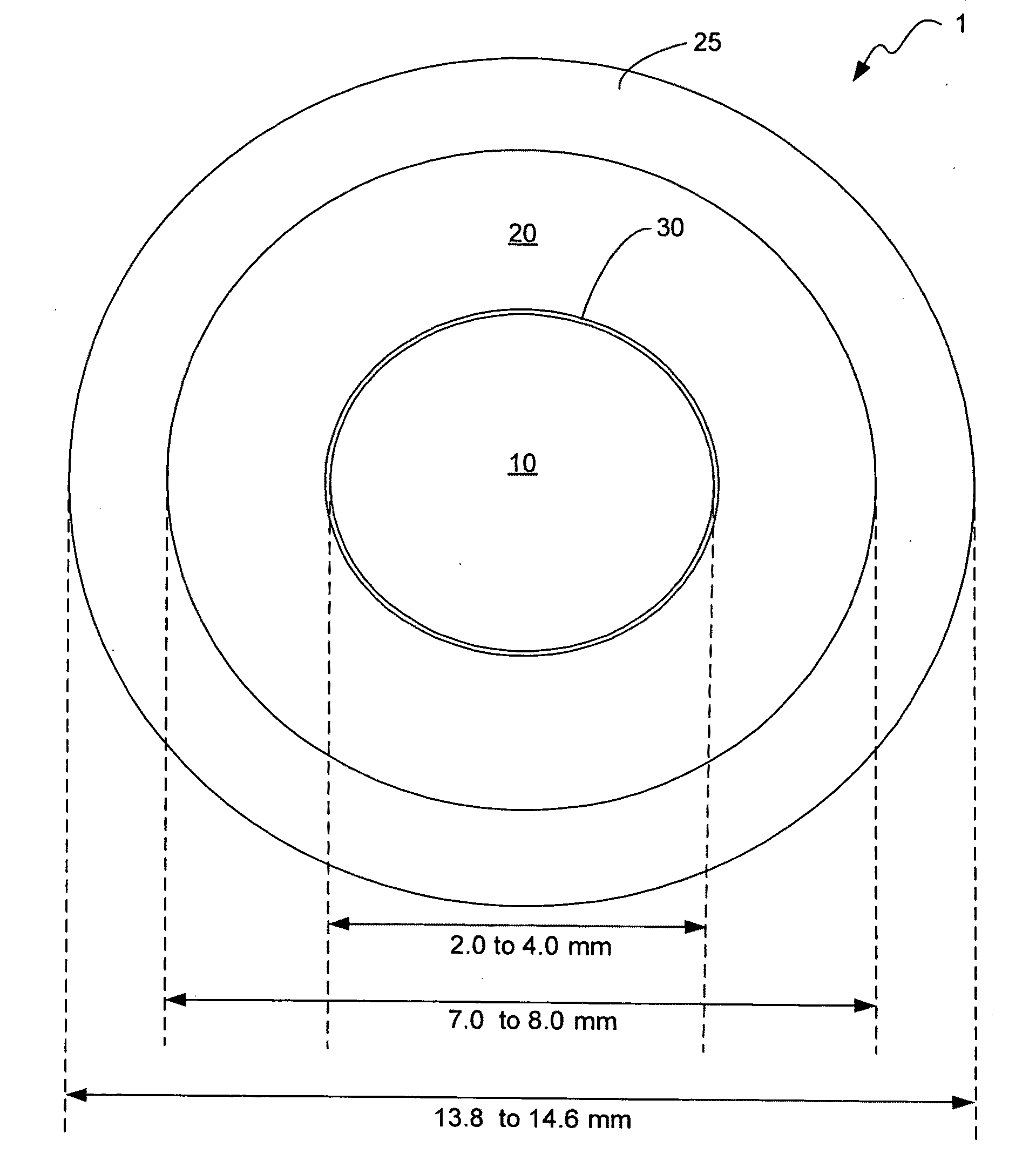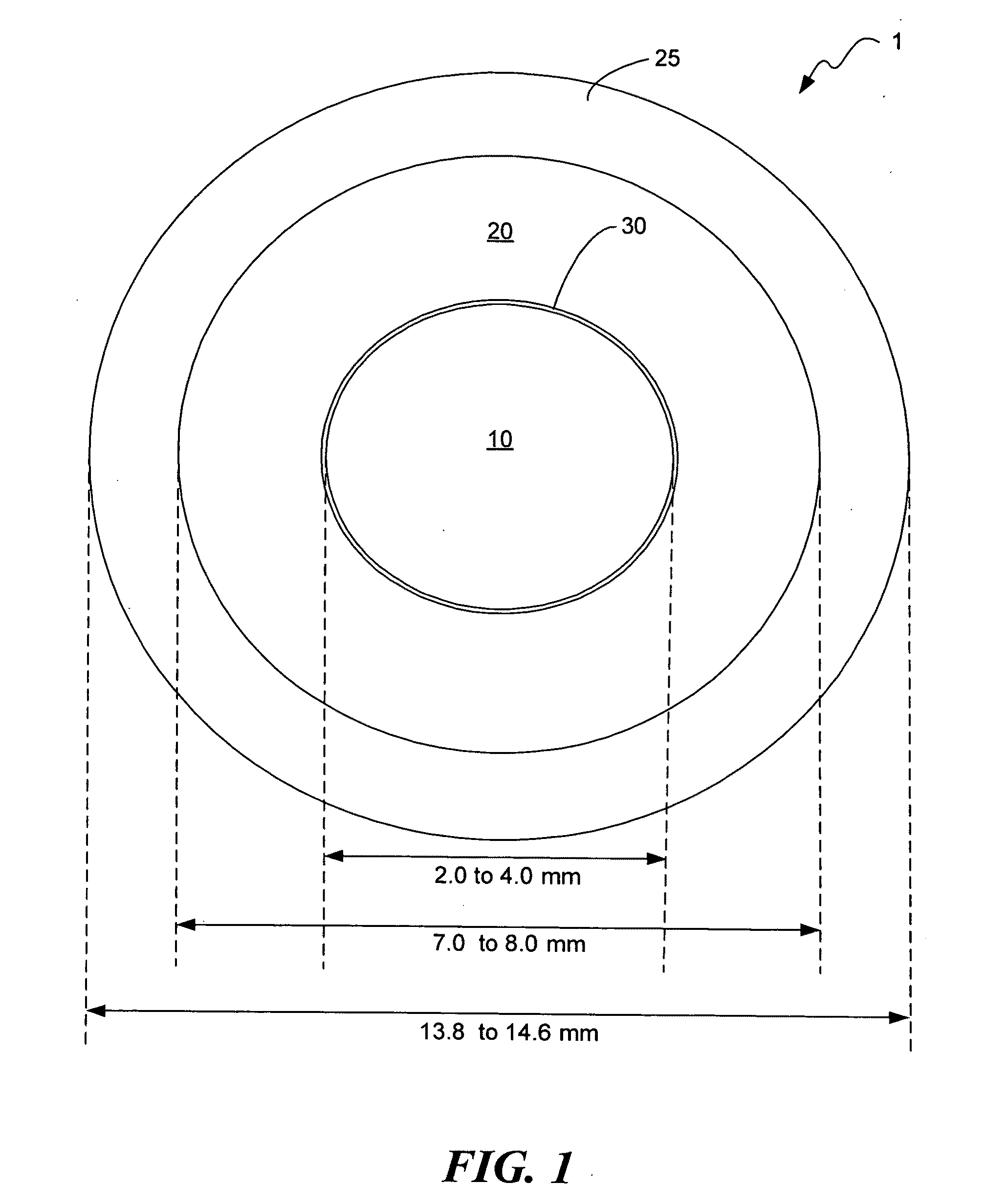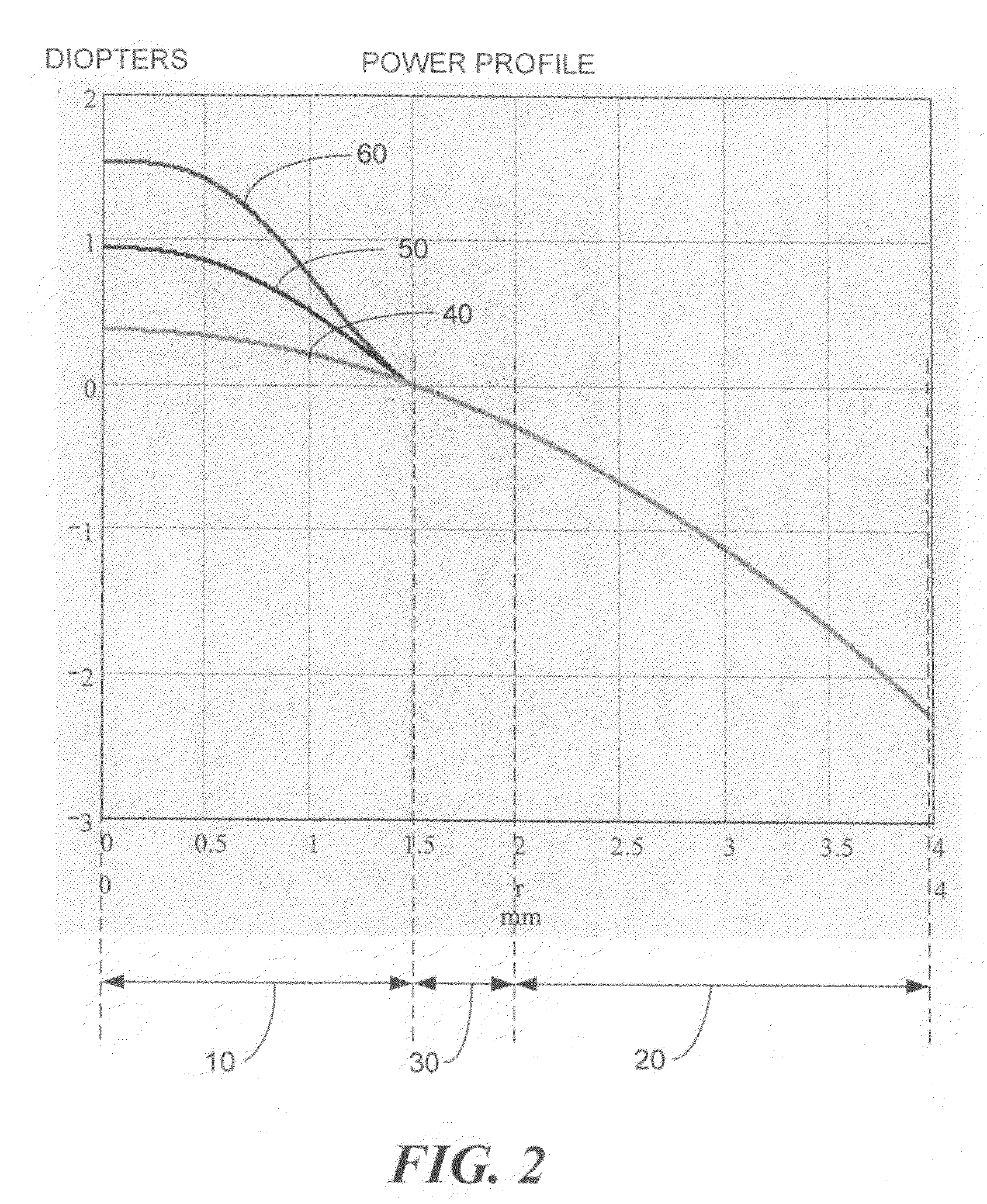Presbyopic treatment system
a treatment system and presbyopic technology, applied in the field of presbyopic treatment system, can solve the problems of inability to focus on objects close at hand, inadequate adjustment of the eye lens, blurry objects close to the eye,
- Summary
- Abstract
- Description
- Claims
- Application Information
AI Technical Summary
Problems solved by technology
Method used
Image
Examples
Embodiment Construction
[0022]The invention relates to a treatment system for treating Presbyopia and pre-Presbyopia that does not compromise the wearer's intermediate or distance vision. For ease of discussion, the terms “Presbyopia” and “pre-Presbyopia” will be referred to hereinafter as simply “Presbyopia”. The invention is directed to a lens series comprising lenses that are tailored to provide an amount of positive ADD power in the central optical zone that is tuned to the residual accommodation and the dynamics of the individual's visual system and to provide an amount of negative spherical aberration in the peripheral optical zone. As an eye accommodates for a near vergence, the pupil constricts (myosis) and the spherical aberration of the optical system becomes more negative. These dynamic ocular factors act to increase the depth of focus of the individual's visual system. In essence, these dynamic ocular factors work in conjunction with the positive ADD power provided by the central optical zone o...
PUM
 Login to View More
Login to View More Abstract
Description
Claims
Application Information
 Login to View More
Login to View More - R&D
- Intellectual Property
- Life Sciences
- Materials
- Tech Scout
- Unparalleled Data Quality
- Higher Quality Content
- 60% Fewer Hallucinations
Browse by: Latest US Patents, China's latest patents, Technical Efficacy Thesaurus, Application Domain, Technology Topic, Popular Technical Reports.
© 2025 PatSnap. All rights reserved.Legal|Privacy policy|Modern Slavery Act Transparency Statement|Sitemap|About US| Contact US: help@patsnap.com



